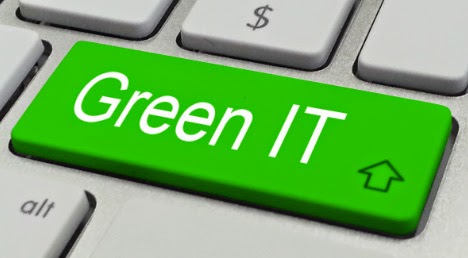
Do information technology and Information System investments improve and enhance organization profitability? If so, is this effect because such investments help improve sales, or is it because they help reduce overall operating expenses and play a key role in value chain? How does the effect of IT on profitability compare with that of advertising and of research and development?
For instance, in environmental aspect, Researchers have estimated that information and communications technology (ICT) is responsible for at least 2 percent of global gas emissions, such as, data centers, computers and other technologies. The environmental sustainability of information systems has been identified as an important topic in the mainstream of IS research (Elliot, 2007). It’s becoming increasingly clear that sustainability can be considered as driver of new growth that capitalizes on a rising demand for environmentally friendly and energy-efficient products. In recent years, business and academic interest toward green product development is rapidly growing (e.g. Baumann et al., 2002). Green product development is receiving increasing attention as means to improve companies’ performance (e.g. Pujari, 2006). IS leaders took heed, and CIOs recently singled out “Green IT” as the most important sustainable strategic technology for 2008 (Thibodeau 2007).
Green Strategy should consider how all goals, from a reduction in electricity usage to carbon footprints. According to (Brooks, Wang and Sarker, 2010) “green” is usually understood to mean environmentally friendly and energy efficient, which can best be supported by IT systems (hardware, software), and how the technology such as Green IT will play an integral part in the firm’s long-term strategy to reduce its carbon footprint and reduce expenses.. For instance, academic literature has primarily focused on large organizations in the technology industry like Dell, HP, and Fujitsu (Pollack, 2008) to analyze their green and sustainable initiatives.
IT is already helping companies take their first steps towards energy conservation. Simple measures, such as having computers and lights shut off automatically at set times, or setting room temperatures to an automated schedule, bring energy significant savings. “IT has a huge opportunity in terms of reducing its consumption and complexity and utilizing IT assets more effectively to drive down the carbon footprint,” says Vijay Sankaran, Ford’s director of infrastructure operations Based on that, the organizations have begun to understand the implications of managing (or mismanaging) IT-related power consumption. For instance, the cost of powering a desktop computer over its life can exceed its initial price, with over 70% of this cost coming from when the computer is not being used.

A number of organizations are expected to jump on the Green IT bandwagon pushing the Green IT services market to an estimated US $4.5 billion by 2013 [Mines, 2008]. Therefore, the development of IT green services may play an essential role in helping companies and economies towards environmental sustainability (e.g, Commission of the European Communities, 2001). For instance in 2010 and 2011 video conferencing efforts an environmental savings of more than 87,500 metric tons of CO2 emissions. This indicates that Telecommunications as an IT/IS technology have the potential to help to reduce other industries carbon emissions such as, develop supply chains and reduce other operation task, or allow more precise management of office lighting and heating, or industrial equipment.
Furthermore, Green IT, in another part of the definition, can lead to a new stage of competitive advantage, especially for the companies that move quickly and realize benefits early – It’s increasingly clear, in fact, that investing in sustainability can enhance national competitiveness (Daniel Esty and Charnovitz 2012).







